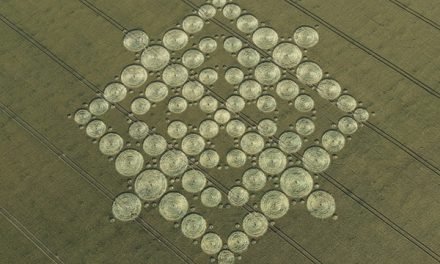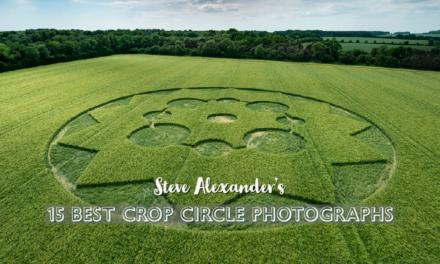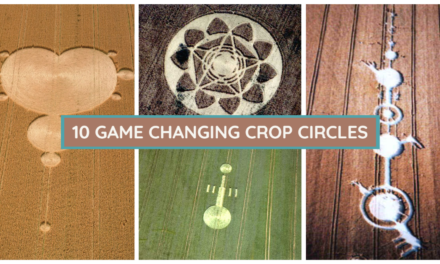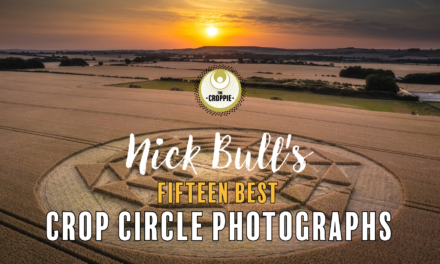
Twenty Great Oilseed Rape Circles

Here are, in The Croppie‘s opinion, twenty of the best circles to have ever appeared in the yellow stuff. You’ll notice that a good number of them are from the three years spanning 2007 to 2010; a period when oilseed formations appeared at a greater rate than in any other time of the phenomenon’s history.
20. Burderop Down, Nr. Wroughton, Wiltshire (1997)
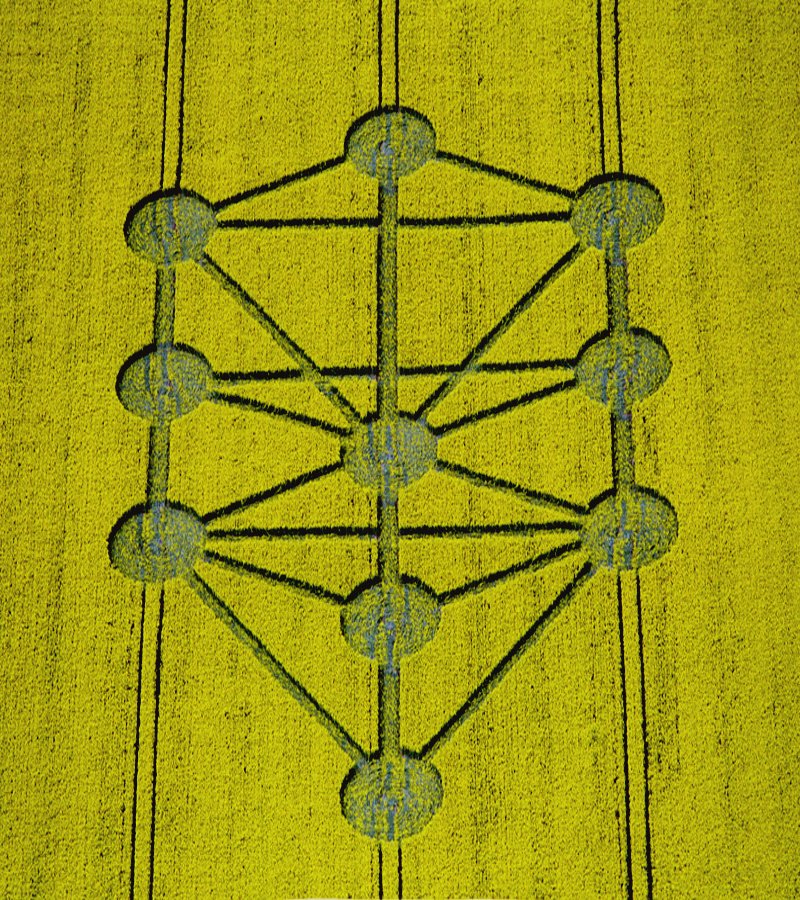
Photograph by Steve Alexander/Temporary Temples
Had this Kabbalistic ‘tree of life’ been produced twenty years later it would have been torn apart due to the use of the tramlines for alignment. The Croppie isn’t bothered and just appreciates this formation for the great piece of work it is.
19. Peaks Down, Baydon, Wiltshire (2009)
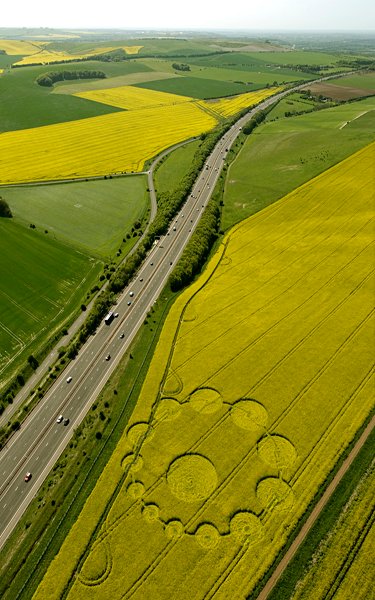
Photograph by Steve Alexander/Temporary Temples
Not everyone is a fan of this circle. It’s incredibly straightforward, aggressively dominates the thinnest end of a narrow field and sits uncomfortably close to the fumes and noise of the M4. At the same time, one person’s hates can be the likes of another. The Croppie appreciates this formation because it’s functional, stark and as close to a brutalist crop circle as you’re ever going to see.
18. West Kennett Long Barrow, Wiltshire (2009)
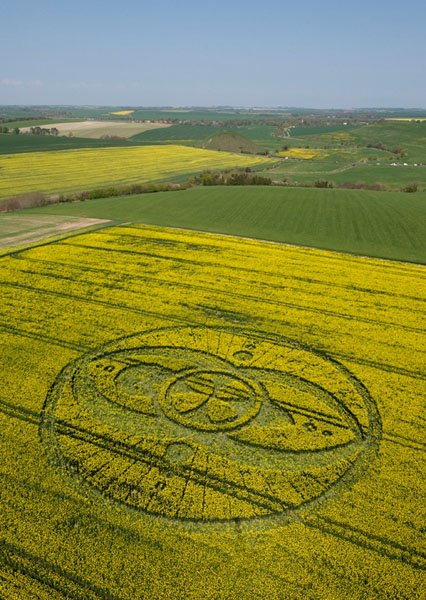
Photograph by Steve Alexander/Temporary Temples
You may argue this is a circle that doesn’t deserve to be in this list. Why? Look closely and you’ll see the outer circle is more of a not-quite-so-circular-circle with a pronounced bulge. Is it a construction error? The topography? However, whilst there are more aesthetically pleasing circles that didn’t get into this list, their designs are nowhere near as interesting as what’s on display here.
If you’re wondering why the field looks very dark green in places, something which definitely doesn’t help the circle’s attractiveness, it’s down to the age of the crop. Oilseed rape flowers only bloom for around two weeks. After that their lustre fades and the petals drop onto the ground. Remember too that in 2009 photographers didn’t have access to drones; to get an aerial photograph they had to fly, or be flown, to the circle in a helicopter or plane. Consequently, it could take a few days from the circle’s discovery for it to photographed from the air.
17. Oliver's Castle, Nr. Devizes, Wiltshire (2007)

Photograph by John Dove.
A simple design that sticks in the memory due to its size and bold lines.
16. All Cannings Bridge, Wiltshire (2009)
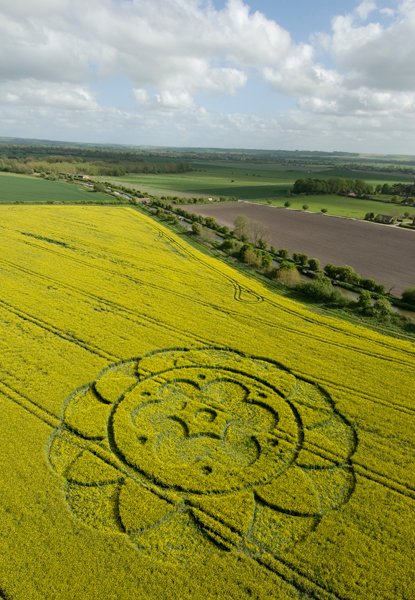
Photograph by Steve Alexander/Temporary Temples
The Croppie has always liked this petalled flower formation. It’s a classic design, graceful and rather cute. At the same time, wouldn’t have looked better in barley?
15. Barbury Castle, Nr. Wroughton, Wiltshire (1997)
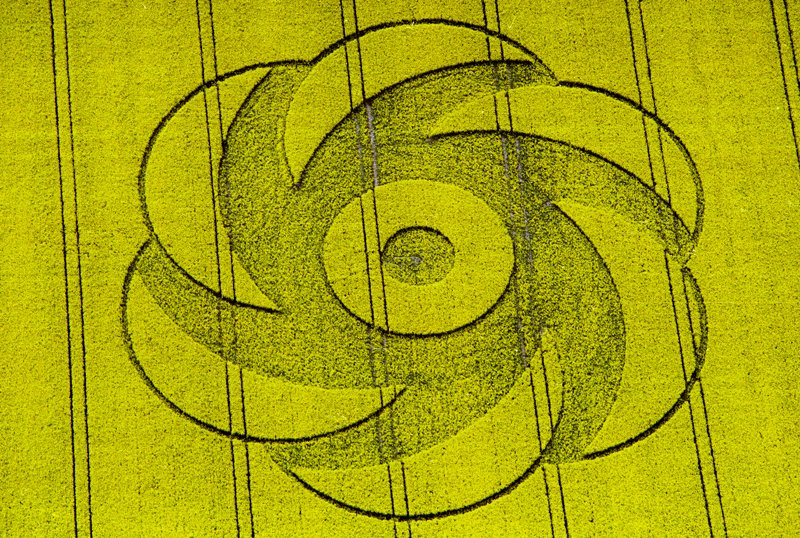
Photograph by Steve Alexander/Temporary Temples
An archetypal, petalled flower design that dates back to the late 1990s. It’s captured here in its prime, showing unusually crisp lines for an oilseed rape formation.
14. The Ridgeway, Avebury, Wiltshire (2009)
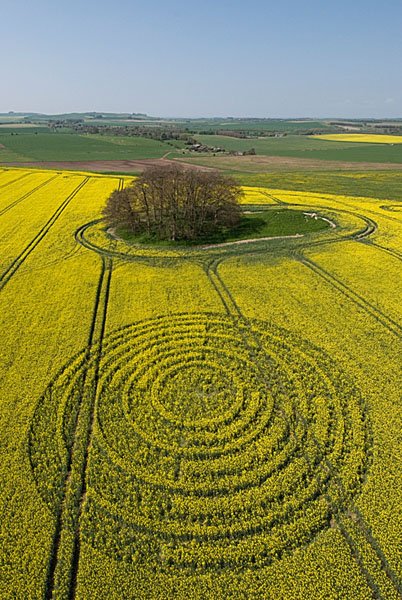
Photograph by Steve Alexander/Temporary Temples
The Croppie has discussed this circle a few times through the years. It’s been said it is uninspiring; a dull cross-hairs target style design. To the contrary, it has echoes of some of Doug and Dave’s work and has been deftly produced.
13. Golden Ball Hill, Nr. Alton Priors, Wiltshire (2005)
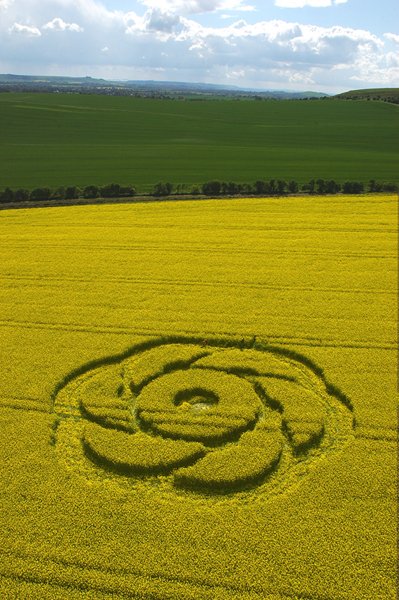
Small, thoroughly cute and certainly looking its best in this image (notice what a difference good light and prime crop make), this minimalist crop circle is totally irresistible. The design was later reproduced by members of Circlemakers.org for the television cameras.
12. East Kennett Long Barrow, Wiltshire (2009)
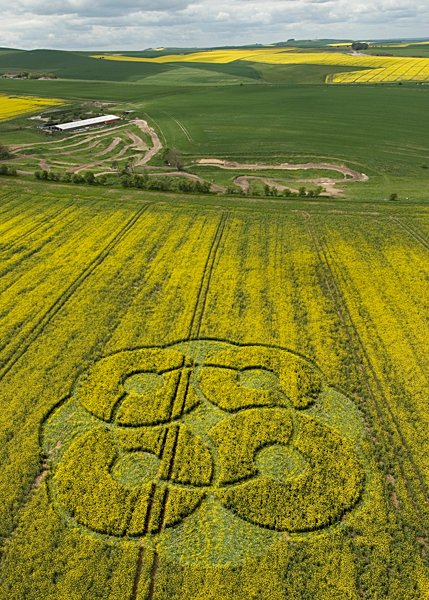
Photograph by Steve Alexander/Temporary Temples
Built around a quintuplet, this circle was massively underappreciated when it was discovered close to East Kennett Long Barrow. It deserves to have been photographed earlier. The Croppie is a massive fan.
11. Roundway Hill, Nr. Devizes, Wiltshire (2009)
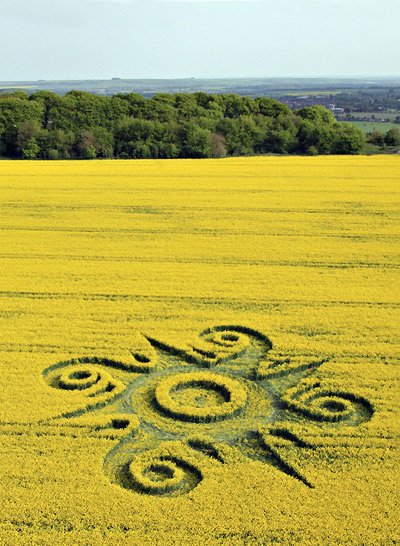
Photograph by Lucy Pringle
A small circle that has beguiled The Croppie since it arrival in 2009. Almost certainly a representation of the sun, this formation’s points and swirls give it a beautifully organic feel.
10. Old Sarum, Salisbury, Wiltshire (2010)
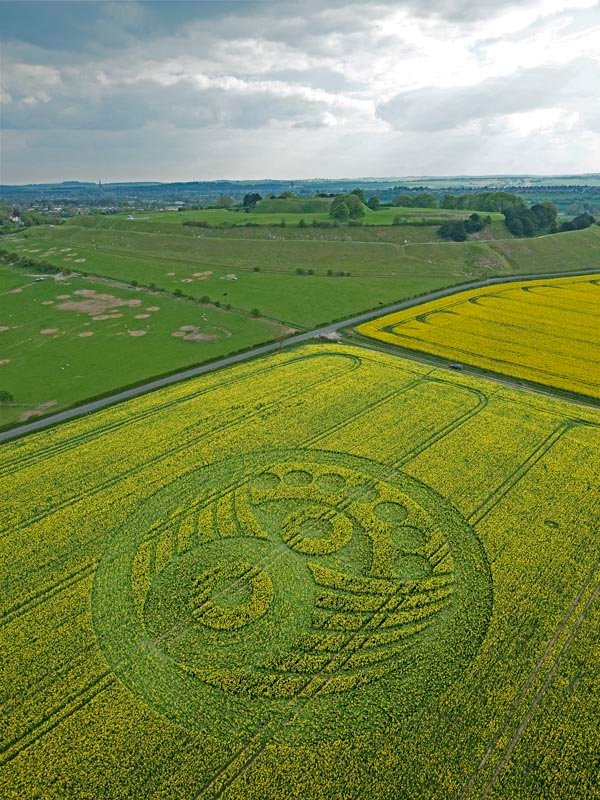
Photograph by Steve Alexander/Temporary Temples
The Croppie loves circles that borrow from a Rorschach test and press the viewer to ask themselves what they see in front of them. This fits the bill perfectly. Are there eyes on display? Or is it a fat angel holding a scarf or banner up above its head? There probably is no answer.
9. Waden Hill, Avebury, Wiltshire (2017)
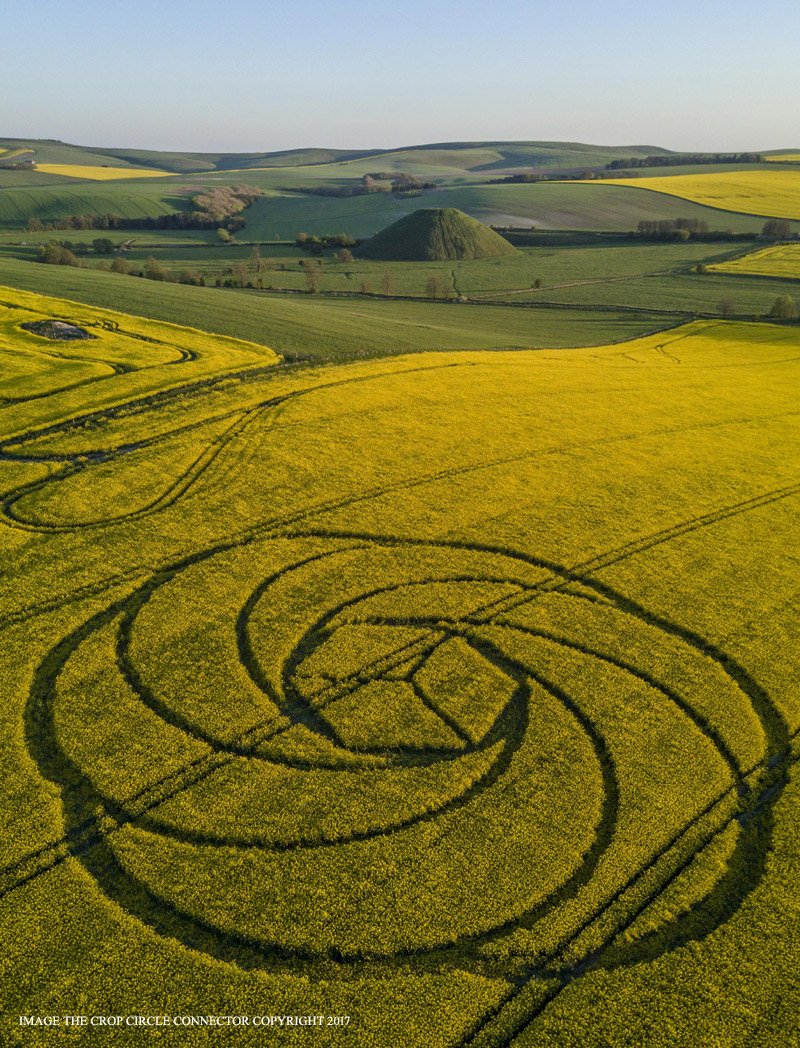
Photograph by The Crop Circle Connector
A tidy combination of two classic circle motifs: the cube and petals. That it sits above Avebury on the slopes of Waden Hill, just under the hill crest from Silbury Hill, is an added bonus.
8. Olivers Castle, Nr. Devizes, Wiltshire (2017)

Photograph by Hugh Newman
Made of no more than a succession of circles, this formation perches on the edge of the Roundway Downs escarpment. A beautiful circle in a beautiful location.
Note the standing centre.
7. Roundway Hill, Nr. Devizes, Wiltshire (2009)
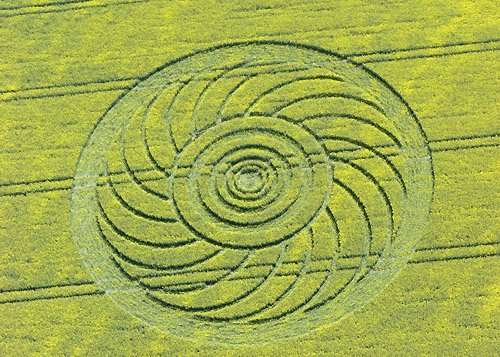
Photograph by John Montgomery
Spinning, elegant crop circles resembling the sun are always welcome in oilseed rape. The Croppie also loves Stuart Dike’s photograph (below) from inside the circle, showing just what an oilseed rape formation is about.
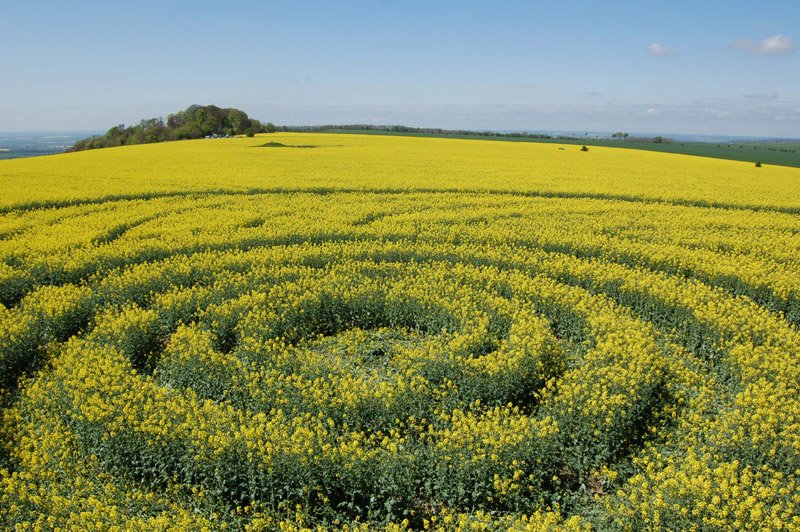
Photograph by Stuart Dike
6. Yarnbury Castle, Nr. Salisbury, Wiltshire (2010)
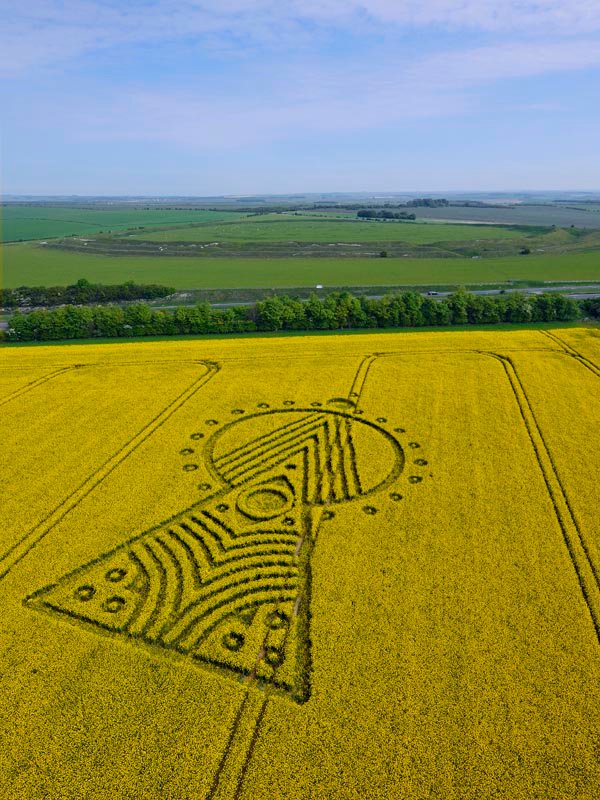
Photograph by Steve Alexander/Temporary Temples
Moronically written off as the work of fence-cutting hoaxers, this circle is anything but the shambolic, asymmetrical mess it was initially labelled. Instead, it is certainly one of the most recognisable oilseed rape crop circles.
5. Wilton Windmill, Wiltshire (2010)
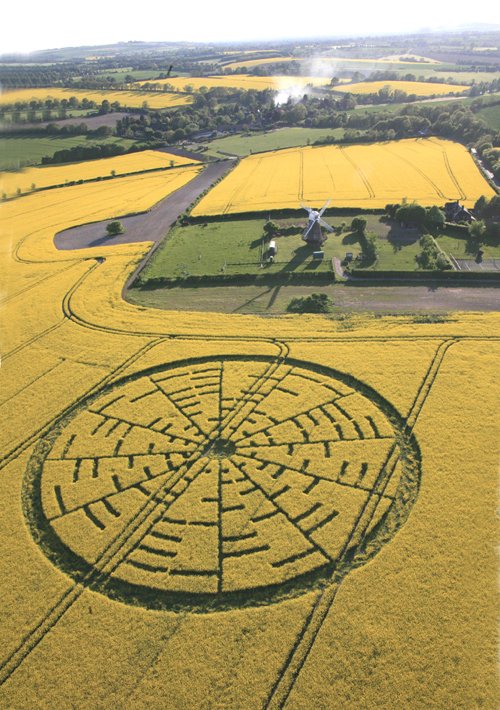
Photograph by Lucy Pringle
The disk-like nature of this circle led many to theorise on its meaning. The most popular suggestion was that the circle is a very close representation of Euler’s Identity, a formula described as ‘the most beautiful and profound mathematical equation in the world.‘ True or not, this circle is beautifully made and sits alongside gorgeous Wilton Windmill. It also gives The Croppie another chance to feature Lucy Pringle’s wonderful image of the circle and the landscape around it.
4. Stonehenge, Nr. Amesbury, Wiltshire (2010)
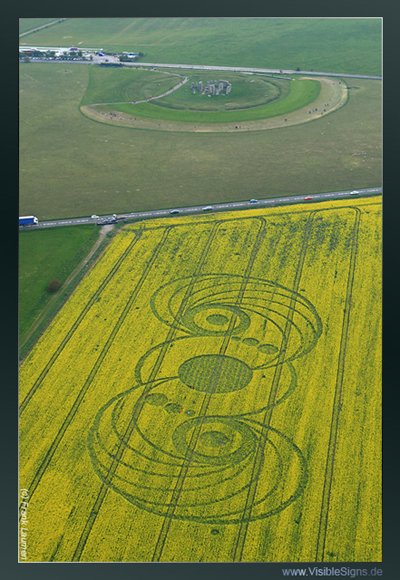
Photograph by Frank Laumen
There’s something almost avian about this wonderful crop circle located right across the road from Stonehenge. It’s a real beauty… although it also a known hoax, bearing the damage caused by someone who couldn’t keep their mouth shut prior to its creation. Nonetheless, we won’t let that spoil a great piece of work.
3. Rutlands Farm, Avebury, Wiltshire (2009)
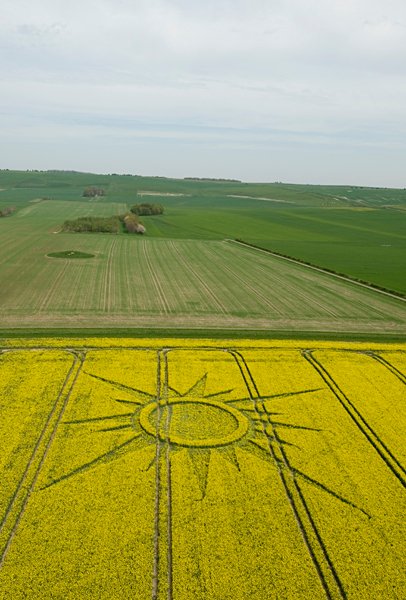
Photograph by Steve Alexander/Temporary Temples
Unfortunately the weather conditions and dropping of the flower leaves conspired against the truly dazzling photographs this circle deserved. Nonetheless, The Croppie has always been drawn to this formation since it first appeared. What could be simpler and more apt than this beautiful representation of the sun in the yellow stuff?
2. Clatford, Nr. Manton, Wiltshire (2009)

Photograph by Olivier Morel.
If you have never stood in an oilseed rape crop circle you simply won’t be able to understand the enormity of this creation compared to pretty much every other of its type. Scale aside, it also possesses a great design built around the classic quintuplet. Some have noted the large arc (in the lower half of the photo above) is possibly a little skew-whiff but it still looks great; after all, there are better known, more loved formations that contain more errors.
1. West Kennett Long Barrow, Wiltshire (1998)

Photograph by Steve Alexander/Temporary Temples
Looking at many of the entries in this list, the ‘Beltane wheel’ close to West Kennett Long Barrow was certainly ahead of its time. Not only was it easily the best oilseed rape formation of the 20th century, it’s still the greatest to date. Part-knot, part-flame, part-bracelet, this is a phenomenal creation. That it still doesn’t receive the hype it deserves says a lot about the fickleness of croppies.
The photo below shows how a member of the public has waded into the standing centre to look for signs of human involvement. We bet they didn’t find a single trace.
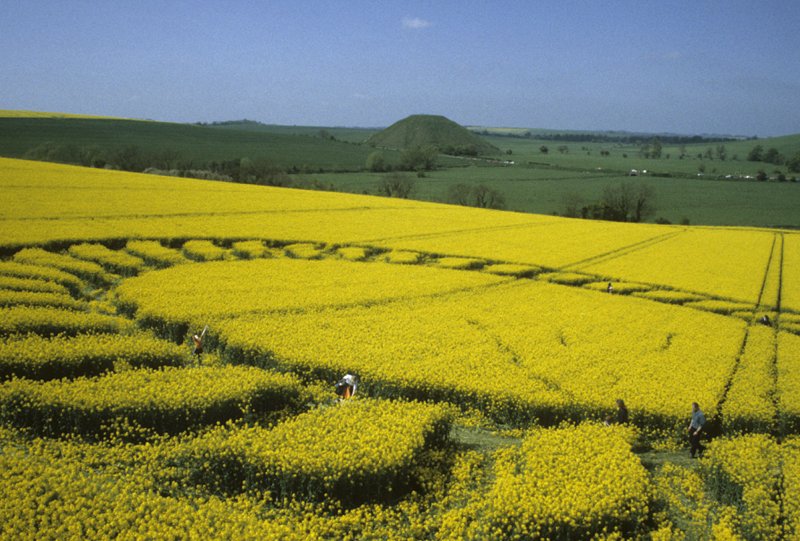
Photograph by Steve Alexander/Temporary Temples


